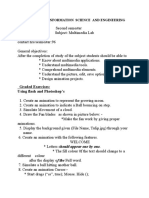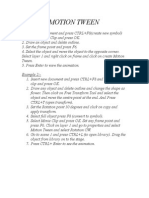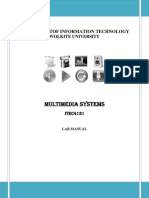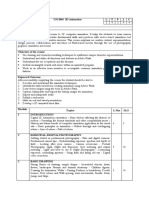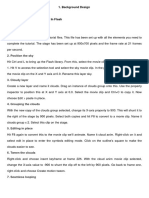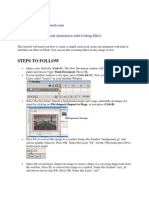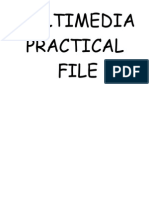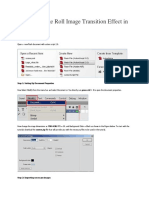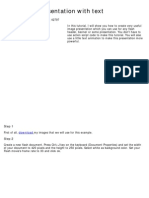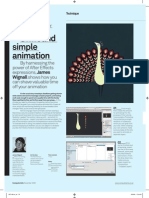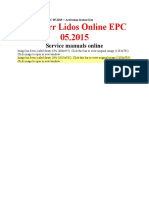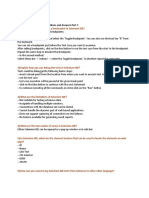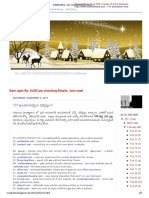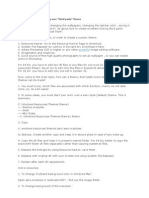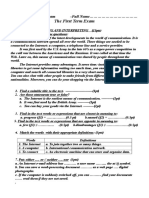0% found this document useful (0 votes)
28 views6 pagesGMM External
The document provides procedures for installing Flash 8 and describes basic graphics and multimedia concepts. It then gives several examples of procedures to create animations and manipulate images in Flash and Photoshop, including growing a moon animation, bouncing ball animation, cloud movement animation, fan blade rotation, extracting a flower from an image, creating a 'Welcome' animation with letters, organizing objects from multiple files, designing a visiting card, adding a title and borders to an image, making a book cover, adjusting image brightness/contrast, and positioning an image on a colored background.
Uploaded by
chokkagnapikasri.21.itCopyright
© © All Rights Reserved
We take content rights seriously. If you suspect this is your content, claim it here.
Available Formats
Download as PDF, TXT or read online on Scribd
0% found this document useful (0 votes)
28 views6 pagesGMM External
The document provides procedures for installing Flash 8 and describes basic graphics and multimedia concepts. It then gives several examples of procedures to create animations and manipulate images in Flash and Photoshop, including growing a moon animation, bouncing ball animation, cloud movement animation, fan blade rotation, extracting a flower from an image, creating a 'Welcome' animation with letters, organizing objects from multiple files, designing a visiting card, adding a title and borders to an image, making a book cover, adjusting image brightness/contrast, and positioning an image on a colored background.
Uploaded by
chokkagnapikasri.21.itCopyright
© © All Rights Reserved
We take content rights seriously. If you suspect this is your content, claim it here.
Available Formats
Download as PDF, TXT or read online on Scribd
/ 6







